CCDC15 localizes to the centriole inner scaffold and controls centriole length and integrity
- PMID: 37934472
- PMCID: PMC10630097
- DOI: 10.1083/jcb.202305009
CCDC15 localizes to the centriole inner scaffold and controls centriole length and integrity
Abstract
Centrioles are microtubule-based organelles responsible for forming centrosomes and cilia, which serve as microtubule-organizing, signaling, and motility centers. Biogenesis and maintenance of centrioles with proper number, size, and architecture are vital for their functions during development and physiology. While centriole number control has been well-studied, less is understood about their maintenance as stable structures with conserved size and architecture during cell division and ciliary motility. Here, we identified CCDC15 as a centriole protein that colocalizes with and interacts with the inner scaffold, a crucial centriolar subcompartment for centriole size control and integrity. Using ultrastructure expansion microscopy, we found that CCDC15 depletion affects centriole length and integrity, leading to defective cilium formation, maintenance, and response to Hedgehog signaling. Moreover, loss-of-function experiments showed CCDC15's role in recruiting both the inner scaffold protein POC1B and the distal SFI1/Centrin-2 complex to centrioles. Our findings reveal players and mechanisms of centriole architectural integrity and insights into diseases linked to centriolar defects.
© 2023 Arslanhan et al.
Conflict of interest statement
Disclosures: The authors declare no competing interests exist.
Figures
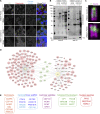
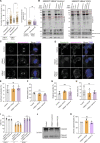
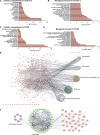
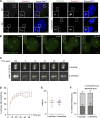
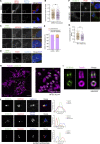
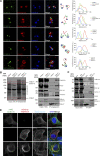
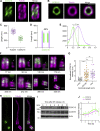


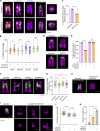
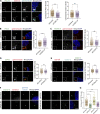
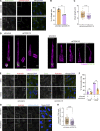
Similar articles
-
WDR90 is a centriolar microtubule wall protein important for centriole architecture integrity.Elife. 2020 Sep 18;9:e57205. doi: 10.7554/eLife.57205. Elife. 2020. PMID: 32946374 Free PMC article.
-
Cep97 Is Required for Centriole Structural Integrity and Cilia Formation in Drosophila.Curr Biol. 2020 Aug 3;30(15):3045-3056.e7. doi: 10.1016/j.cub.2020.05.078. Epub 2020 Jun 25. Curr Biol. 2020. PMID: 32589908
-
Towards understanding centriole elimination.Open Biol. 2023 Nov;13(11):230222. doi: 10.1098/rsob.230222. Epub 2023 Nov 15. Open Biol. 2023. PMID: 37963546 Free PMC article. Review.
-
An interaction network of inner centriole proteins organised by POC1A-POC1B heterodimer crosslinks ensures centriolar integrity.Nat Commun. 2024 Nov 14;15(1):9857. doi: 10.1038/s41467-024-54247-5. Nat Commun. 2024. PMID: 39543170 Free PMC article.
-
Centrosome maturation - in tune with the cell cycle.J Cell Sci. 2022 Jan 15;135(2):jcs259395. doi: 10.1242/jcs.259395. Epub 2022 Jan 28. J Cell Sci. 2022. PMID: 35088834 Review.
Cited by
-
Poc1 bridges basal body inner junctions to promote triplet microtubule integrity and connections.J Cell Biol. 2024 Aug 5;223(8):e202311104. doi: 10.1083/jcb.202311104. Epub 2024 May 14. J Cell Biol. 2024. PMID: 38743010 Free PMC article.
-
The Structure of Cilium Inner Junctions Revealed by Electron Cryo-tomography.bioRxiv [Preprint]. 2024 Sep 9:2024.09.09.612100. doi: 10.1101/2024.09.09.612100. bioRxiv. 2024. Update in: EMBO J. 2025 Apr;44(7):1975-2001. doi: 10.1038/s44318-025-00392-6. PMID: 39314311 Free PMC article. Updated. Preprint.
-
Analysis of genomic copy number variations through whole-genome scan in Yunling cattle.Front Vet Sci. 2024 Jul 22;11:1413504. doi: 10.3389/fvets.2024.1413504. eCollection 2024. Front Vet Sci. 2024. PMID: 39104544 Free PMC article.
-
Centriole structural integrity defects are a crucial feature of hydrolethalus syndrome.J Cell Biol. 2025 Apr 7;224(4):e202403022. doi: 10.1083/jcb.202403022. Epub 2025 Feb 26. J Cell Biol. 2025. PMID: 40009365
-
Resting CD4 regulatory T cell and neuroblastoma: A Mendelian randomization study.Pediatr Discov. 2024 Jun 8;2(2):e85. doi: 10.1002/pdi3.85. eCollection 2024 Jun. Pediatr Discov. 2024. PMID: 40625890 Free PMC article.
References
-
- Aydogan, M.G., Hankins L.E., Steinacker T.L., Mofatteh M., Saurya S., Wainman A., Wong S.S., Lu X., Zhou F.Y., and Raff J.W.. 2022. Centriole distal-end proteins CP110 and Cep97 influence centriole cartwheel growth at the proximal end. J. Cell Sci. 135:jcs260015. 10.1242/jcs.260015 - DOI - PMC - PubMed
Publication types
MeSH terms
Substances
LinkOut - more resources
Full Text Sources
Molecular Biology Databases

